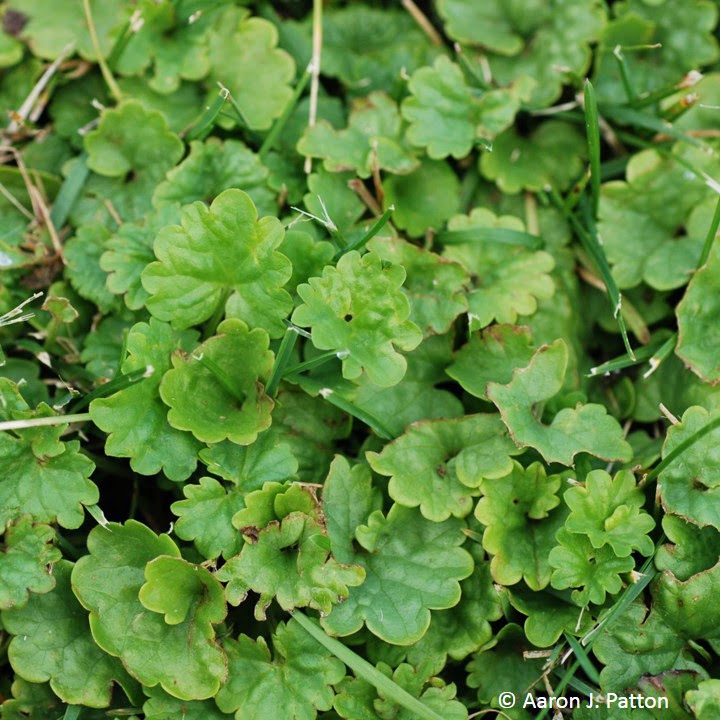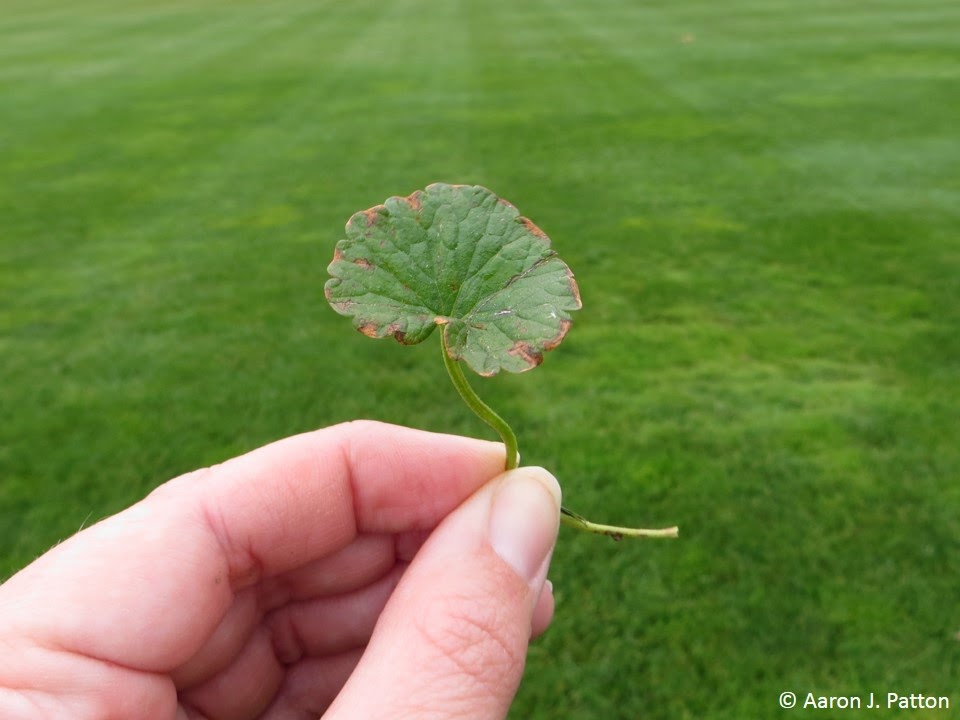Ground Ivy
Biology: Ground ivy (Glechoma hederacea), also known as creeping Charlie, is a very difficult to control perennial broadleaf weed. It can often be seen growing in the shade and invading turfgrass and other mowed areas throughout the United States. Ground ivy thrives in moist, rich soils located in shaded areas, but will grow in full sun as well. These traits combined with the ability to produce aggressive rooting stolons, tolerate low mowing heights, and shade/crowd-out surrounding plants, help to make ground ivy one of the most difficult-to-control turf weeds in lawns.
Identification: Ground ivy is a perennial broadleaf weed that invades turf through aggressive stolons that ‘creep’ below the turfgrass canopy. It forms very dense, mat-like patches that effectively crowd-out the surrounding turf. Like other members of the mint family, ground ivy has distinctive square stems with two leaves branching from each origin point (node) and emits a disagreeable odor when crushed, damaged, or mown. Leaves are round to kidney-shaped with prominent veins and broad rounded edges. These leaves are held above the canopy by long petioles (leaf stems) which can effectively shade and weaken the surrounding turf. Spreading stolons root aggressively at the node, further making ground ivy difficult to control. It produces flowers from April to June that are tubular in shape, purplish blue with red speckles, lobed petals, and are arranged in groups of three to seven. Ground ivy can often be mistaken for other broadleaf weeds such as common mallow or henbit. However, common mallow has rounded stems and sharply toothed leaf edges while henbit stems do not ‘creep’ along the ground nor root at the nodes.
 |
| Kidney-shaped leaves with deeply lobed edges |
 |
| Two leaves branch from each node |
 |
| Dense arrangement of ground ivy leaves |
 |
| Leaves held atop long petioles (stems) |
 |
| Square stems, characteristic of the mint family |
 |
| Spreads via aggressive prostrate stolons |
 |
| Ground ivy regrowth via aggressive stolons |
 |
| Ground ivy flowers |
Cultural control: Because of its aggressive growth and establishment, there are very few cultural practices that have been observed to effectively control ground ivy. Management practices such as improving surface drainage, watering deeply and infrequently, and cultivating (aeration) compacted soils may hinder the development of ground ivy in favor of a more dense, aggressive turf. Nitrogen fertilization will also provide some reduction of ground ivy cover in turf.
Biological control: None known for specific use in ground ivy. Our preliminary research suggests that iron HEDTA (FeHEDTA) may be used to manage ground ivy with multiple applications.
Chemical control: Because of its aggressive nature and the survivability of stolons, there are no preemergence herbicide options for the control of ground ivy in turf although Gallery (isoxaben) can help reduce the ability of stolons from rooting which will slow the spread of this weed. As a result, management must focus on postemergence herbicides. Repeat applications of two- or three-way mixtures of 2,4-D, dicamba, MCPP, of MCPA may offer fair levels of control. Turflon Ester (triclopyr) typically provides better control. Additionally, products that contain triclopyr or fluroxypyr as one of the ingredients in a two- or a three-combination herbicide will work well. In warm-season turf, Manor (metsulfuron) can control ground ivy when applied in combination with a non-ionic surfactant (0.25%). Most of these herbicides require supplemental applications for adequate control.
Aaron Patton, Turfgrass Extension Specialist
Leslie Beck, Postdoctoral Research Associate
